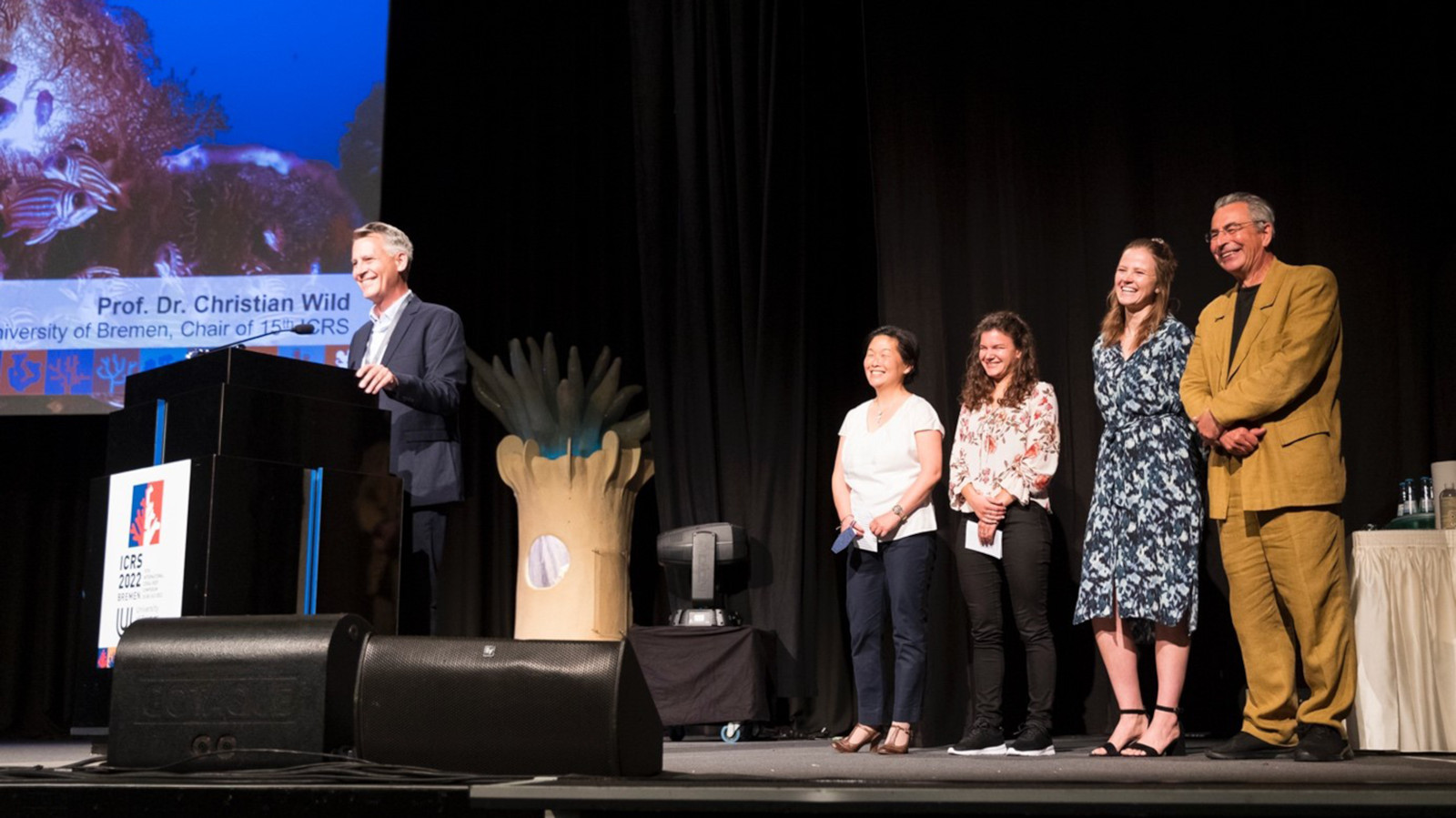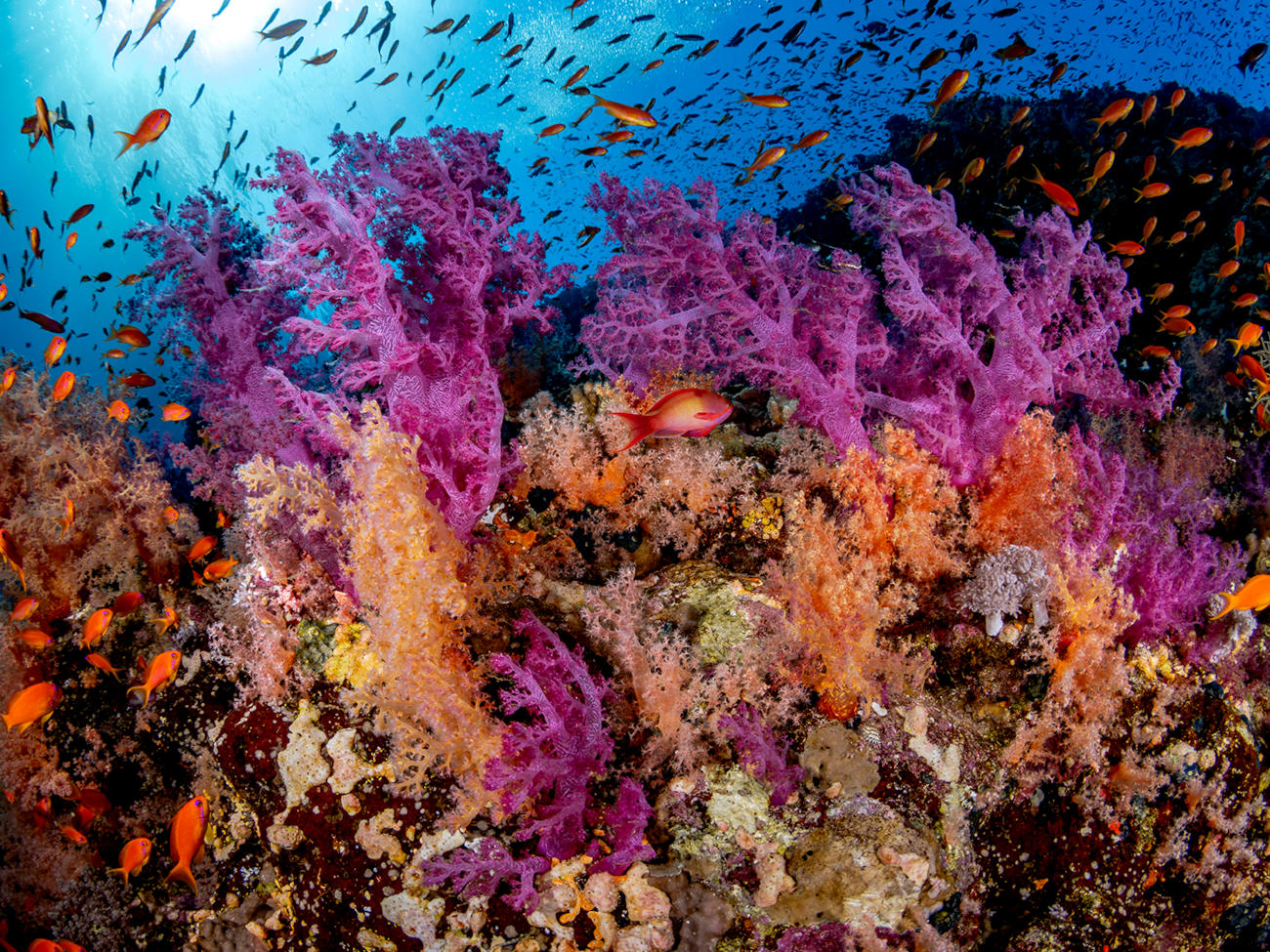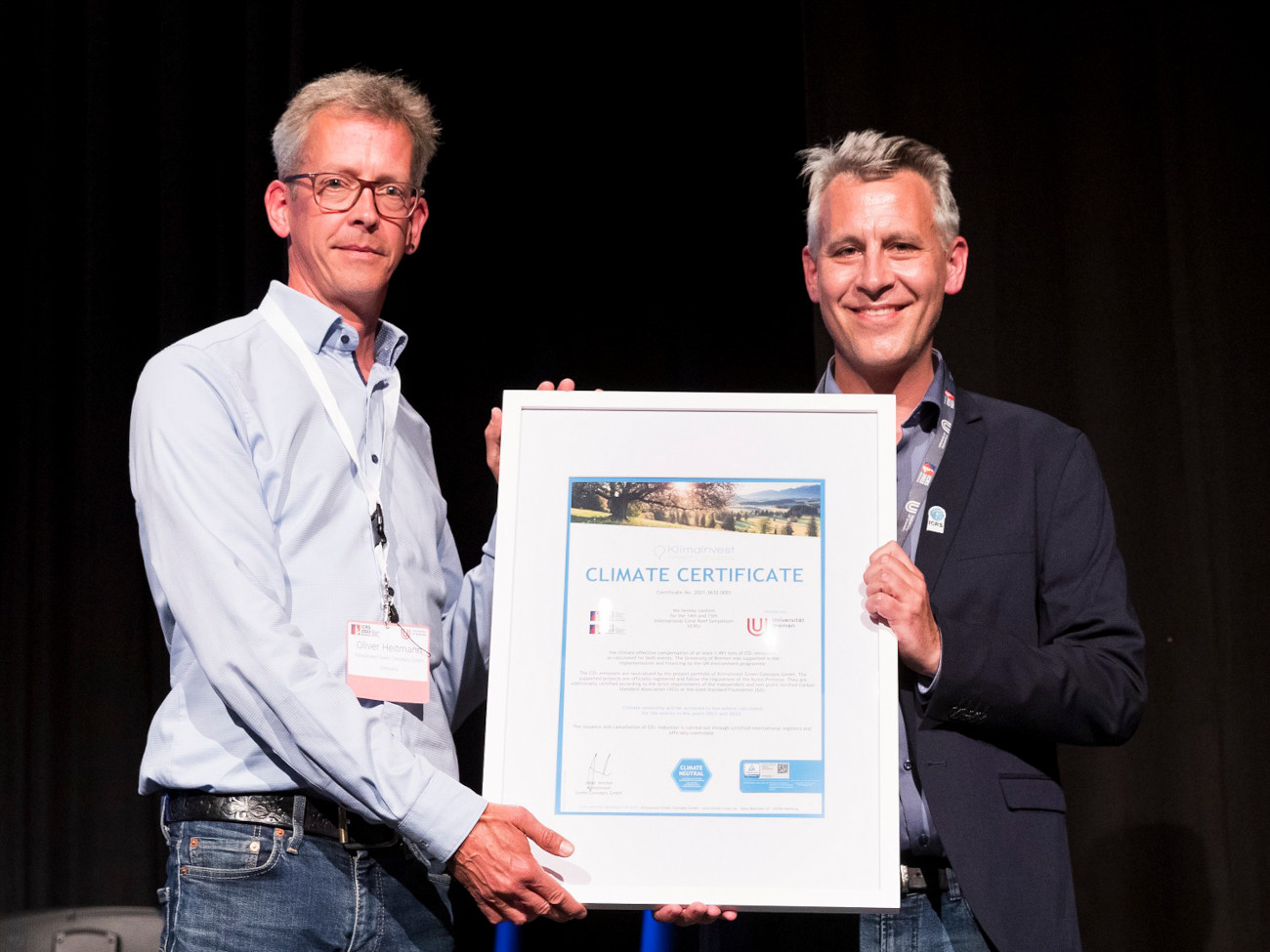
© Thomas Hellmann / Universität Bremen
Climate-neutral conference – how does it work?
In an interview, Professor Christian Wild explains how he and his team organized the first climate-neutral International Coral Reef Symposium in Bremen.
In an interview, Professor Christian Wild, head of the International Coral Reef Symposium (ICRS) 2021 and 2022 and marine scientist at the University of Bremen, reveals what measures can contribute to making a conference climate-neutral and how CO2 emissions are calculated.
“Designing a conference on the conservation of coral reefs to be climate-neutral was a matter of course for me right from the start,” says Professor Christian Wild, head of the Department of Marine Ecology at the University of Bremen. “Coral reefs are dying before our very eyes. This is primarily due to climate change and the associated rise in ocean temperatures. That’s why it was clear to me that an event that deals with the topic should not itself contribute to the problem,” says Wild.
Christian Wild had already outlined the sustainability goals of the conference in 2016 in his proposal to bring the conference to Bremen. With regard to the objectives, he focused on social, economic and ecological measures. To achieve the goal of making the conference climate-neutral, Wild and his team developed their own “Green Strategy”. “This strategy is based on two steps,” reports Wild. The main objective of the first step was to minimize carbon dioxide emissions on site. The second step, which according to Wild was much more difficult to achieve, involved calculating and offsetting all unavoidable CO2 emissions from the conference.

© Renata Romeo / Ocean Image Bank
How was it possible to reduce CO2 emissions at the conference and calculate the remaining emissions?
To keep CO2 emissions at the conference as low as possible, Wild and his team looked at different areas of the event organization. They carried out extensive research in order to save as much CO2 as possible. This was achieved primarily by selecting a suitable venue, taking into account the city’s infrastructure as well as the catering and amenities for the guests on site. “These measures have already played a significant role in achieving the objectives of the first step,” says Wild. In the second step of the Green Strategy, with the help of bachelor students Sophie Littke and Jennifer Bogun, he compiled a comprehensive calculation of the unavoidable CO2 emissions caused by the holding of the conference.
The calculation was prepared for 1,052 participants on site, including the organization team and press representatives, as well as for 272 online participants. They used the Greenhouse Gas Protocol (GHG Protocol) for Germany as a basis for calculating their emissions. Overview lists of emission factors for activities, food and commodities, which are published online by the Federal Environment Agency, provided a further basis for the calculation. The calculation then resulted in an estimate of the CO2 emissions, which can be divided into the categories of catering, waste, hotel, public transport, electricity and sewage as well as travel.
Together with the climate protection agency energiekonsens, a concept for sustainable catering was developed. Among other things, this included refraining from meat and fish during the conference. Instead, the organizing team focused on purely vegetarian food with an emphasis on regional fair-trade and certified organic products. On average, six meals, two ice-breaker drinks and ten coffees were calculated per participant. In addition, one and a half liters of drinking water was estimated per person and day. Based on these average values, the team determined the emission factors per food type and was able to calculate the total consumption of one person for the duration of the conference.
Waste, which is typically produced in large quantities at conferences, could be best avoided by using porcelain dishes and glasses instead of disposable dishes. The virtual provision of conference program books and documentation also contributed significantly to reducing waste. The conference calculated 0.15 kilograms of waste per person and per dish, plus a paper napkin for each dish and coffee break. These figures are based on the CO2 emissions of waste production in an average household.
The choice of a centrally located venue, within walking distance of many hotels in the area, minimized the travel distance and the resulting carbon dioxide emissions. To calculate the CO2 emissions from hotel stays, the organizing team assumed that participants from outside the hotel spent an average of five nights in a three-star hotel in the city center.
A free public transport ticket was also made available to all participants of the conference. The calculation of the carbon dioxide emissions for the on-site transport assumed that 25% of the participants and the organizing team used public transport between the accommodation and the venue twice a day.
The venue Messe Bremen and Congress Centrum produces some of the electricity in its own solar power plant. The remaining electricity used there comes from a Norwegian hydropower plant. Based on known data on the energy sources used and wastewater disposal, it was possible to calculate the emission factor for the event rooms. An emission factor of 10 kilograms of CO2 per participant was estimated for the use of electricity and sanitary facilities.
The travel routes and means of transport used could be determined on the basis of the participants’ countries of origin. At distances of more than 500 kilometers, it was assumed that the participants would arrive by plane. For journeys of less than 500 kilometers, it was expected that the same number of participants would arrive by car or train.
The calculated total balance was 1,491 tonnes of CO2 caused by the conference. At 83.8%, the travel of participants from all over the world for the international conference accounted for the largest share of CO2 emissions. The cost estimate was then reviewed by independent experts and the calculation was found to be correct.

© Thomas Hellmann / Universität Bremen
How was it possible to offset the calculated CO2 emissions and achieve climate neutrality at the conference?
In order to make the conference climate-neutral, the total emissions calculated in the second phase of the Green Strategy needed to be offset by support for marine climate protection projects. In order to finance the compensation, supporters had to be found and convinced. “The most time-consuming task in the entire conference organization was probably to get sponsors, because it involved a lot of door-to-door canvassing, constantly following up, gathering arguments,” says Wild. Ultimately, the United Nations Environment Program (UNEP), a sub-organization of the United Nations dedicated to nature and environmental protection, was selected as a suitable partner for the conference.
With the help of the climate protection agency KlimaInvest, criteria and certification standards were defined in order to identify suitable and qualified projects to be supported by the conference. Of particular importance in compiling the project portfolio was the fact that they had a positive impact on local coral reefs, had a link to the United Nations Sustainable Development Goals and ensured a wide geographical spread, ideally in all the world’s oceans. The six projects selected included green power generation from wind energy in the Dominican Republic and Aruba, solar power in Mauritius, hydropower in India, and a project to protect mangroves and coastal marsh forests in Borneo and Indonesia.
By successfully implementing their Green Strategy, Wild and his team were able to hold ICRS 2022 as the first major climate-neutral conference in Bremen. Wild would like to encourage everyone who is interested in sustainable and climate-neutral event organization to do so.
“Imitation is expressly encouraged.”
“The first and most important tip is probably that if someone is planning something like this, they should be able to spend a lot of time on it,” Wild advises. His second tip is that “you don’t have to reinvent the wheel all the time” and that interested colleagues are welcome to get their bearings using his model, and he is happy to advise them.
Further Information:
The Green Strategy of the ICRS in detail and as a video
More information about Professor Christian Wild’s research area Marine Ecology